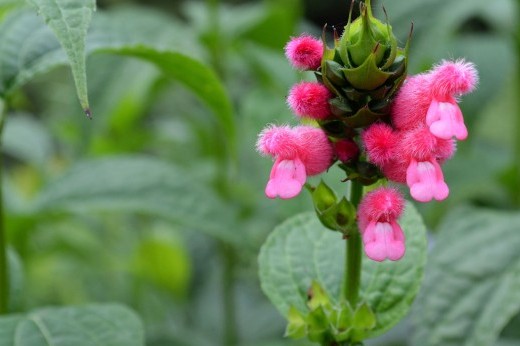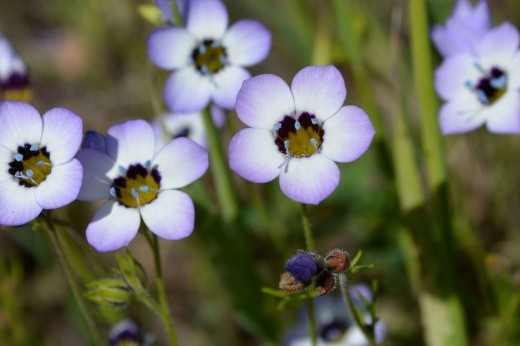The theme of the Annual Border this year is plants for the birds. These annuals were chosen specifically for their abundance of food in the form of seeds, fruit, and insect pollinators.
As Wayken Shaw, gardener for the Lily Pool Terrace and border gardens as well as Magnolia Plaza, explains, “Birds can be attracted to plants for a number of reasons. One main reason is as a food source. They want their nectar. They want their fruit. They want their seeds. They want the insects that happen to also want food from that plant.”
A garden for wildlife can also be a beautiful garden. The Annual Border is planted in the style of an English cottage garden. Instead of a geometric design, the plants have been placed in drifts throughout the border. Towering broom corn and sunflowers at the back are interspersed with lower plants in front such as nasturtiums, gazanias, and petunias. Succession has been planned into the design—cosmos and marigolds are ready to take over when shorter-lasting plants like zinnias are finished blooming.
Located on the opposite side of Lily Pool Terrace, the Perennial Border does its part for the birds with multiseason benefits from native plants like coneflowers that attract important pollinator insects, and trees and shrubs like crape-myrtle and smoke bush that provide sheltered places to nest.
Here’s a sampling of the plants you’ll find in the Annual Border this year, all suited for a bird’s palate. Often a single plant has multiple characteristics that attract birds—producing seeds as food, attracting insects with sugar-rich nectar, and boasting bright, colorful flowers. Consider some of these plants for your own garden—whether a small bed or a container display—and curate your own plant menu for hungry birds.
PLANTS FOR HUNGRY BIRDS
Seed Buffet
Seeds like sorghum and millet provide much-needed nutrients. High in protein and carbohydrates, they serve as fuel for birds, especially during the fall migration season as they journey south. This is no accident—the times when many plants are fruiting and producing seeds coincide with peak migration seasons.
Broom Corn
Sorghum
Millet
Setaria italica
Plains Coreopsis
Coreopsis tinctoria
Globe Amaranth
Gomphrena haageana
Marigold
Tagetes erecta
Sunflower
Helianthus annuus
Insect Magnets
Both nectar and pollen offer the energy and nutrients that insects need. In turn, insects like butterflies, bees, and moths are an important source of food for birds. You’ll also notice many of these nectar-rich plants, such as sage and nasturtium, have funnel-like or tubular flowers that attract ruby-throated hummingbirds.
Petunia
Petunia
Nasturtium
Tropaeolum
Zinnia
Zinnia elegans
Cornflower
Centaurea cyanus
Sage
Salvia
Blanket Flower
Gaillardia pulchella
Hyssop
Agastache
Meet gardener Wayken Shaw and join tours of the Lily Pool Terrace and Annual Border gardens in August during Garden After Hours: Summer Tuesdays.
Be sure to check out For the Birds, a multidisciplinary exhibition and program series inspired by the Garden’s resident birds, as well as “For the Birds: The Birdsong Project,” a multialbum set of original recordings celebrating birds by 200-plus artists, compiled by Randall Poster. Join in on birding tours and events and explore our other bird-themed gardens. Find more information at bbg.org/forthebirds.

















